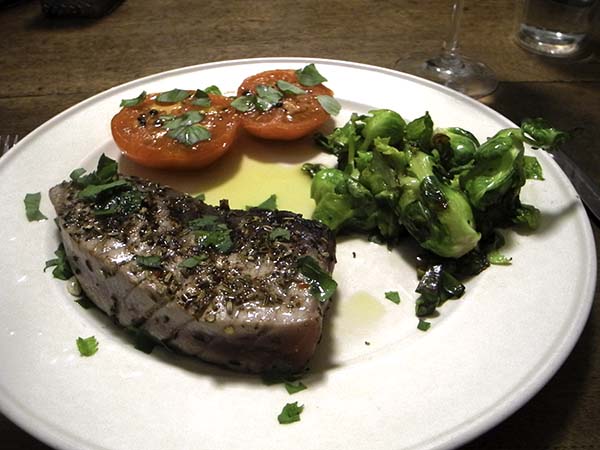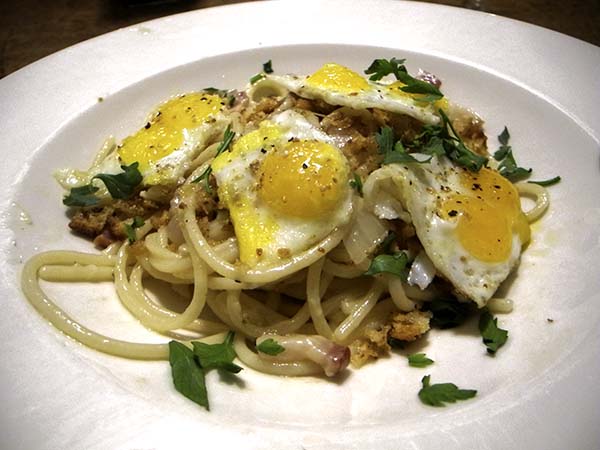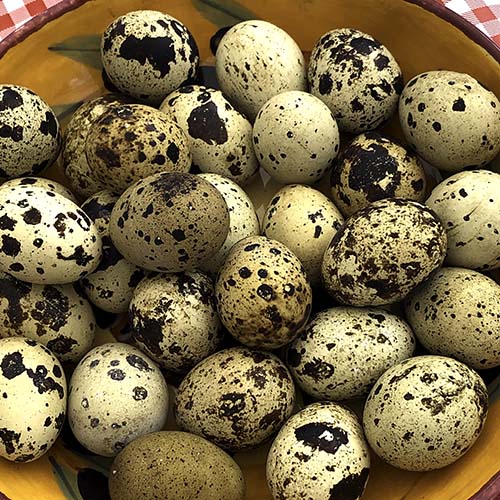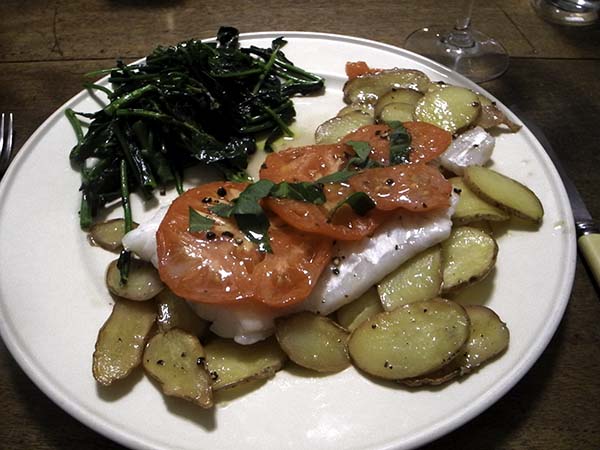
Yeah, it’s just a steak but, wow, what a steak!
My favorite beef purveyor didn’t have my favorite culotte/picanya cut the other day. After a short consultation at their Union Square Greenmarket stand with their guy Mike, I opted for a pair of very well marbled strip steaks (‘New York’ wasn’t anywhere in their description, but I was buying them in New York CIty, and the beef had been raised in New York State, so what’s in a name?).
I cooked them as I would have cooked culotte steaks, which is to say, using a reverse sear process, the only way I’ve become interested in cooking any steak, if it’s of a decent thickness, starting some time last fall.
- a beautifully marbled one pound 100% grass fed, dry-aged black angus strip steak from Sun Fed Beef (Earlville, Chenango County, NY) in the Union Square Greenmarket, brought to room temperature, seasoned on both sides with sea salt and freshly-ground black pepper, placed on a rack inside a heavy oval enameled cast iron pan in a 275º oven probably for somewhere between 45 and 60 minutes (I lost track of the timing), or until medium rare, checking after a half hour with an instant thermometer until it read 90º to 95º, for medium-rare (it will finish cooking in the skillet and continue to increase in temperature, removed, and if the accompanying vegetables are not yet ready, perfectly safe if allowed to wait on a warm plate, covered with tin foil (for, say, up to about 45 minutes), the steak[s] then placed over high heat on the surface of a very well seasoned small antique cast iron pan that had been coated with a very small amount of cooking oil, one with a higher smoke point than olive oil, alternatively a bit of ghee, or a combination of butter and olive oil (I used Mac Nut macademia nut oil from Whole Foods Market by itself), and, remembering that the steak was already fully cooked, and so only needed to be inside the pan long enough to acquire some color, seared briefly (a minute and a half or 2 minutes on each side), removed from the heat, allowed to rest for up to 10 minutes on 2 warm plates, covered loosely with foil, some lemon juice squeezed on top, sprinkled with chopped rosemary from Phillips Farms, drizzled with a Whole Foods Market Portuguese house olive oil, garnished with red amaranth from Windfall Farms
- one bunch of washed, drained, and roughly chopped rainbow chard from Lani’s Farm, wilted in a couple tablespoons ofWhole Foods Market house Portuguese olive oil in which 2 halved garlic cloves from Westside Market had first been heated and slightly softened, seasoned with sea salt and freshly-ground black pepper, and finished with a little lemon juice and a drizzle of olive oil
- the wine was a South Africa (Western Cape) red, Farrington Shiraz-Viognier Reserve 2016, from Bottlerocket Wines
- the music was Schubert’s 1823 three-act German opera with spoken dialogue, to a libretto by Joseph Kupelwieser, ‘Fierrabras’, performed by the Chamber Orchestra of Europe and the Arnold Schoenberg Chor conducted by Claudio Abbado
April 5




